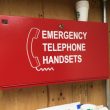Multiagency use of 700 MHz network is gathering steam
While FCC and public-safety representatives may disagree on spectrum issues surrounding the best utilization of the 700 MHz D Block, both groups agree on the fundamental goal: establish a nationwide, interoperable wireless broadband communications network that meets the needs of the first-response community.
Exactly how that goal should be achieved has been a matter of considerable debate. FCC officials have contended that the primary barrier to making the broadband network a reality is funding, and that auctioning the D Block is the best way to resolve the financial dilemma at a time when state and local government entities are facing tight budgets in a down economy.
Not only would the D Block generate a few billion dollars that Congress could direct toward helping fund the proposed nationwide network, but building the public-safety network in concert with a D Block partner also could reduce significantly the cost of building the network. Furthermore, having a commercial partner share Band 14 with public safety would mean better economies of scale for equipment, resulting in cheaper prices for first-responder gear.
If the D Block were reallocated to public safety, FCC officials question whether the financial case for the public-safety broadband network would work, with many in the agency noting that the FCC has spent much more time and effort developing a business model than public safety has.
Meanwhile, public-safety representatives have claimed that if Congress reallocates the D Block to first responders, government entities could leverage the spectrum to help fund the nationwide network.
Many have interpreted this position to mean that public safety would be willing to lease spectrum to commercial carriers. While such an arrangement could make sense in some circumstances, industry analysts question whether commercial leases would generate enough revenue to be worthwhile, given the realities of supply and demand.
Indeed, leasing valuable spectrum in major metropolitan areas could provide some attractive revenue streams, but such urban areas are the environments where public safety would be least inclined to lease frequencies, because first responders likely would need all the spectrum., and a commercial operator may not want to operate on a secondary basis. Meanwhile, in rural areas, most industry sources believe public-safety could have enough spectrum to lease to commercial operators in most instances, but airwaves in sparsely populated locations would not be expected to attract significant bids from carriers.
But another method of leveraging the spectrum appears to be gathering momentum. Instead of deploying networks solely for traditional first-response users such as police, fire and EMS, many governmental entities would like to let other municipal departments — such as public works and public transportation — access the network for a fee.
This model would mean more users on the network, which should improve economies of scale compared to the limited public-safety market. In addition, these other department can bring their own revenues sources — annual budgets and access to non-public-safety grant programs.
Such an approach also embraces the notion of converged networking that has become increasingly prevalent, said Roger Quayle, CTO of IPWireless, which developed the technology used to deploy a broadband wireless system on 2.5 GHz spectrum in New York City.
“These multiagency networks are run out of the CIO’s organization,” Quayle said. “They aren’t run out of the traditional public-safety radio shop.”
One problem with the multiagency model is that current rules only allow first responders to utilize the 700 MHz broadband spectrum. However, most industry sources believe policymakers conceptually would support the notion of broadening the definition of a first responder to include critical-infrastructure enterprises such as hospitals, utilities and transportation departments, each of which can play vital roles in emergency scenarios.
But even if the rules were changed, many question whether the non-public-safety entities would be willing to pour resources into gaining access to a 10 MHz network of which public safety typically would be the top-priority user, which may not leave much bandwidth to secondary users during an incident. However, adding the 10 MHz D Block to the equation would make public-safety officials more willing to share the airwaves and secondary users more likely to want to participate.
“My gut feeling is that 20 MHz is going to be the minimum necessary to actually operate all of these first and second responders in a city like Seattle,” said Bill Schrier, CTO for the city of Seattle.
What do you think? Tell us in the comment box below.

















